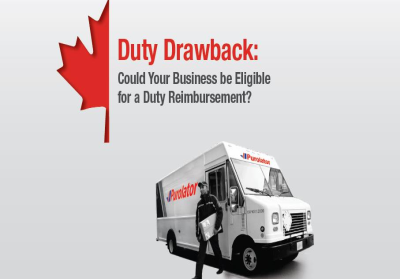White Papers
Duty Drawback

Businesses engaged in importing or exporting goods have long understood that customs compliance is a process not for the faint of heart. Transporting goods across an international border involves strict compliance with required documentation, security procedures, and revenue obligations. Due diligence is also required since many border clearance requirements change, often with little advance notice.
Because customs compliance is such a time-consuming and exacting process, the overwhelming majority of businesses off-load the function to a logistics provider, customs broker, or some other qualified third party. But one issue that often goes overlooked in the process of importing and exporting goods is the topic of duty reimbursement. Duty reimbursement—commonly referred to as dutydrawback—allows businesses a refund of up to 99 percent of duties paid on products that are imported into the U.S. and then subsequently exported or destroyed. In other words, the policy allows businesses to obtain a refund when they export a product that contains components on which duties were already paid.
But the process of filing a drawback claim is highly complicated. The government sets a very high bar for a claimant to prove drawback eligibility, and the process can actually take years to complete. A business must maintain meticulous records and be able to provide a clear “trail” that a product initially imported into the U.S.is the same—or in some cases, nearly the same—as the product subsequently exported (or destroyed). The process is so complicated, in fact, that the CBP website includes the following warning: “Be aware the process of filing for drawback can be involved and the time it takes to receive funds can be lengthy.”
This paper explains and identifies opportunities available to U.S. businesses for resolving Canadian duty reimbursements issues.
You must have javascript enabled in your browser to receive the whitepaper successfully